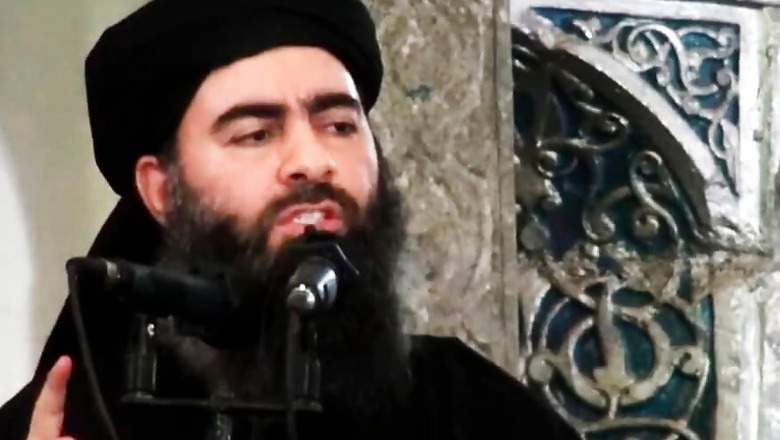
views
Washington: The CIA got the tip-off about the possible location of the elusive ISIS chief Abu Bakr al-Baghdadi some months ago when one of his wives and a courier were arrested and interrogated, according to the New York Times.
Armed with that initial tip, the Central Intelligence Agency worked closely with Iraqi and Kurdish intelligence officials in Iraq and Syria to identify more precisely Baghdadi's whereabouts and to put spies in place to monitor his periodic movements, the report said.
President Donald Trump on Sunday announced that Baghdadi, the world's most wanted terrorist "is dead" in a raid on Saturday at his hideout by the US Special Forces in northwest Syria.
American officials told the newspaper that the Kurds continued to provide information to the CIA on Baghdadi's location even after President Donald Trump's decision to withdraw the American troops left the Syrian Kurds to confront a Turkish offensive alone.
The Syrian and Iraqi Kurds, one official said, provided more intelligence for the raid than any single country.
According to a Syrian engineer who spoke with villagers living near the raid site, Baghdadi had sought shelter in the home of Abu Mohammed Salama, a commander of another extremist group, Hurras al-Din.
The commander's fate in that raid, and the precise nature of his relationship to Baghdadi, are not clear, the report said.
As the US Army's elite Delta Force commando unit began drawing up and rehearsing plans to conduct the mission to kill or capture the ISIS leader, they knew they faced formidable hurdles. The location was deep inside territory controlled by Al Qaeda. The skies over that part of the country were controlled by Syria and Russia.
The military called off missions at least twice at the last minute, the report said.
The final planning for the raid came together over two to three days last week. A senior administration official said that Baghdadi was "about to move."
Military officials determined that they had to go swiftly. If Baghdadi moved again, it would be much harder to track him with the American military pulling out its troops and surveillance assets on the ground in Syria, it said.
During Sunday's press conference at the White House, Trump said that -Baghdadi, when cornered in a tunnel by American forces, detonated a suicide vest and that "his body was mutilated by the blast."
He also said "test results gave certain immediate and totally positive identification. It was him (Baghdadi)."
Trump added that American forces remained in the compound occupied by Baghdadi for about two hours.
Trump did not provide any details of how that identification was made. But the quick turnaround after Baghdadi's violent demise suggests that American Special Operations forces made use of biometric tests and DNA technology, which has advanced significantly in recent years, another report in The New York Times said.
The latest DNA-testing machines can provide a positive identification in about 90 minutes, according to David H. Kaye, a Penn State Law School professor who specialises in the field.
But military commandos also base their conclusions on several other factors, including human intelligence and, when possible, basic facial features, the report said.
The known timeline of events suggests that an initial identification of Baghdadi came almost immediately, but that firm confirmation may have taken a few more hours, it said.
Delta Force missions targeting so-called high value targets such as Baghdadi often include personnel with specialised expertise in areas ranging from intelligence collection to bomb disposal.
Some are also trained in biometrics and have responsibility for helping to identify targets who are captured and killed, the report quoted American officials familiar with the process.
Suicide bombs often do leave the terrorist's head intact, counterterrorism experts note, meaning that the Americans at the scene may have had a good look at Baghdadi's face, which was clearly visible in past photographs and ISIS videos.
For more technical results, it might be possible to get fingerprint identification from a person who had died so violently, or try to scan their eyes if they remain intact.
Team members would also collect DNA samples, in the form of body parts or blood. Over the past two to three years, advances in DNA technology have led to the production of portable Rapid DNA devices, which can provide accurate automated results in as little as 90 minutes.
The report also said that authorities may have taken a DNA sample from Baghdadi when he was in custody at an American-run detention camp in Iraq in the mid-2000's.
"They already have a data repository, said Kara Frederick, a fellow at the Center for a New American Security who worked as an intelligence analyst with Special Operations.
Kaye said there was nothing particularly surprising about how quickly Baghdadi was identified. Even if American forces in the region lack the latest portable kits, older laboratory DNA tests now take only about eight hours to produce a reliable sample.




















Comments
0 comment